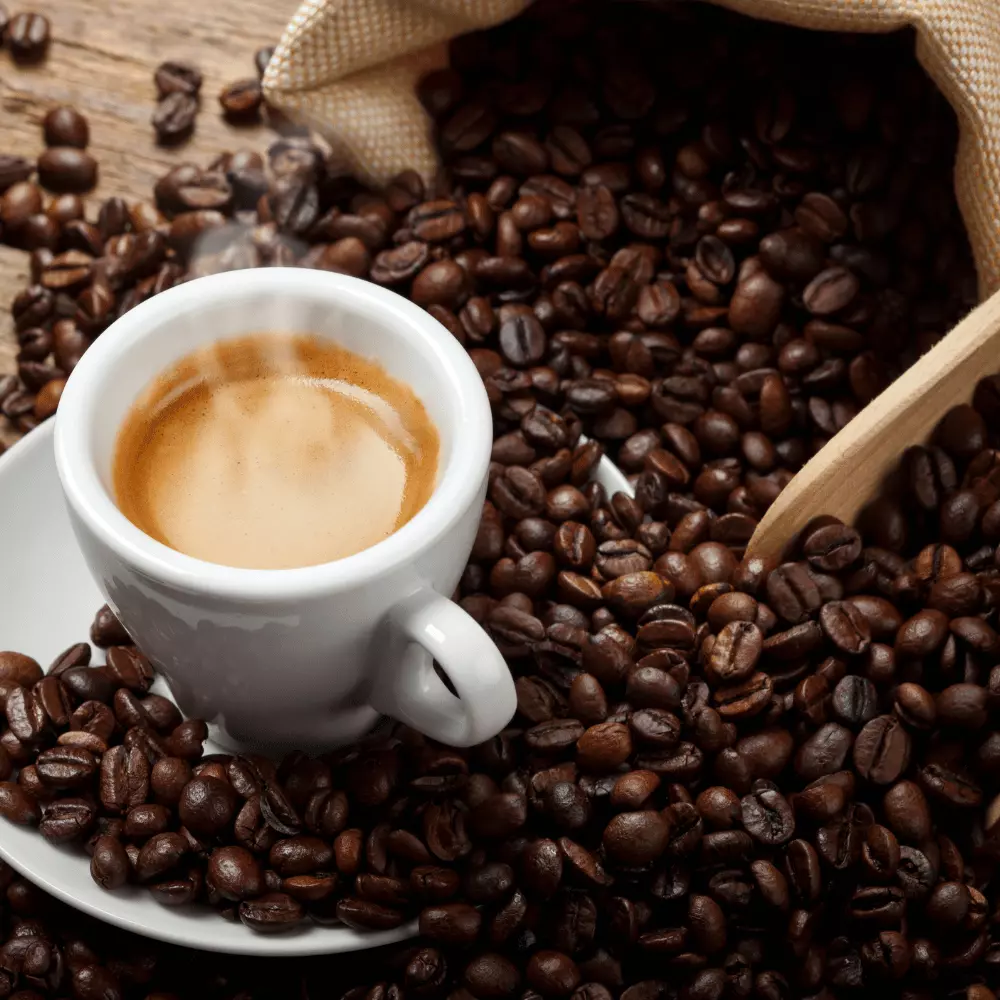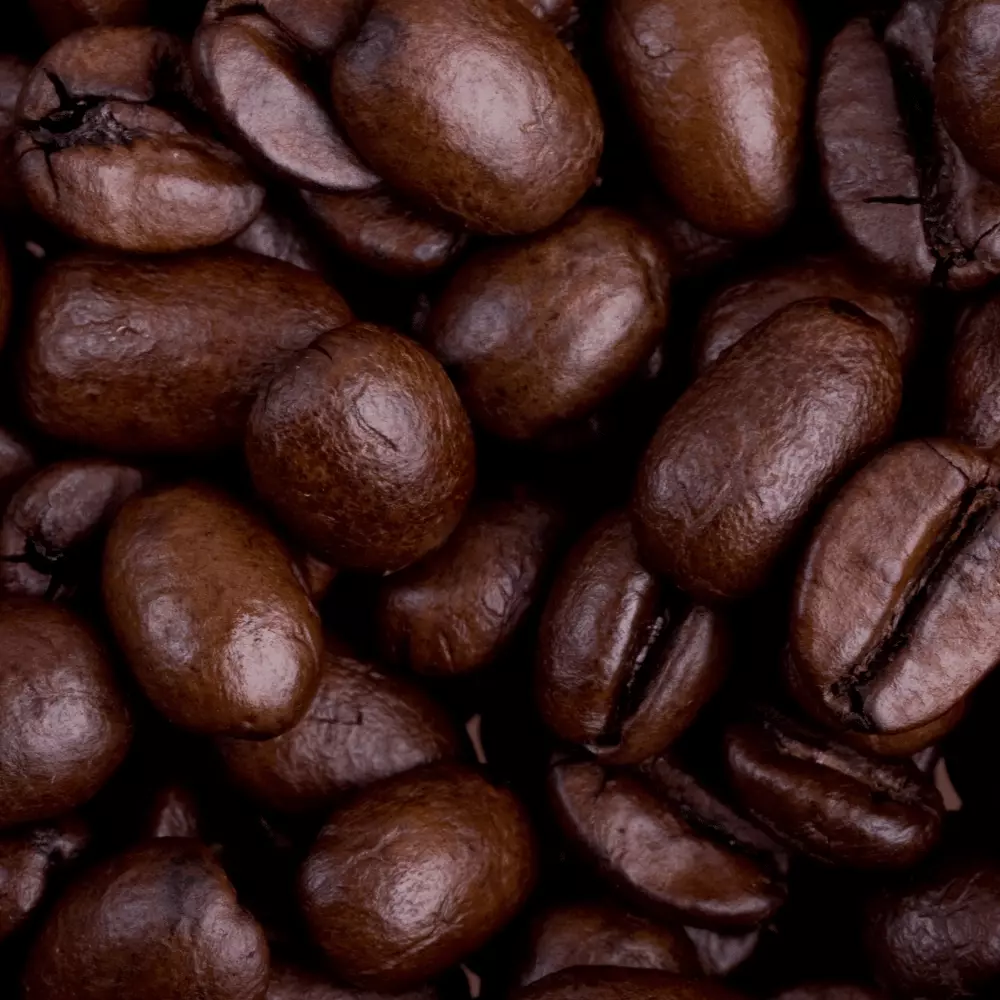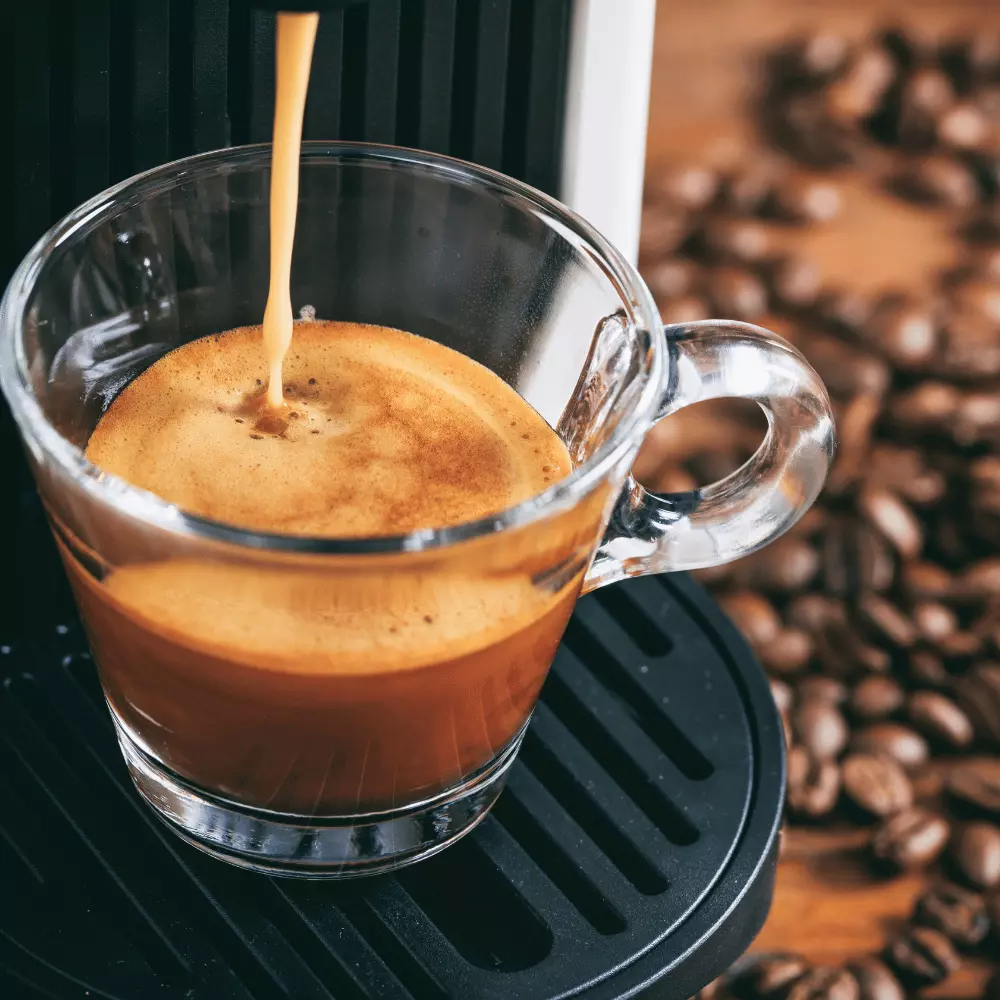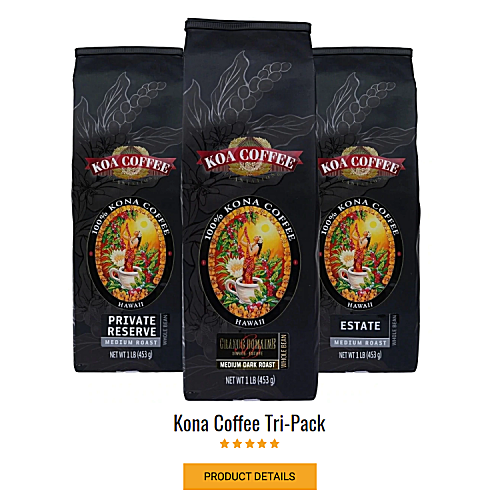Table of ContentsHide
- What Exactly is Espresso or Expresso?
- A Look Into the Intriguing History of Espresso
- Espresso or Expresso: Dissecting the Spelling Conundrum
- Challenging Common Misconceptions
- Linguistic Disparities
- Cultural Disparities
- Historical Disparities
- Exploring the Intricacies of Making Espresso or Expresso
- Uncovering the Multifaceted Benefits of Espresso: A Deeper Look
- The Power of Antioxidants in Espresso or Expresso
- Enhances Digestion
- Boosting Energy Levels with Espresso
- Reduces Risk of Depression
- Reducing the Risk of Chronic Diseases
- The Espresso vs Expresso Conclusion
- FAQ
- How to Make an Expresso?
- Which One Is the Correct Spelling, Espresso or Expresso?
- What Countries Use the Term - Expresso?
- How to Make an Expresso Martini?
Are you one of the many who find themselves perplexed by the two similar yet distinct terms, espresso, and expresso? Perhaps you’ve been left wondering whether they are interchangeable or if one is more correct than the other. Fret not, as we embark on a comprehensive journey to uncover the truth. Join us as we delve deep into the roots and evolution of these words and investigate their nuanced differences in usage. Additionally, we’ll reveal the secrets to crafting the perfect cup of coffee and the potential health benefits that come with it. So, whether you’re an expert coffee connoisseur or a novice just starting, let’s unpack the mystery of espresso vs. expresso and uncover the question of what is expresso.
What Exactly is Espresso or Expresso?
At the heart of the matter lies the beloved beverage known as espresso. Imbibed by millions of coffee enthusiasts worldwide, it is a concentrated and potent shot of coffee produced by forcing hot water through finely-ground coffee beans using high pressure. In this segment, we shall venture forth into the origins of espresso, tracing its path from its inception to its current standing as a staple in coffee culture.

A Look Into the Intriguing History of Espresso
The inception of espresso traces back to the early 20th century in Italy, where it was initially introduced and rapidly gained popularity. The etymology of the term “espresso” has been a subject of controversy, but the prevailing belief suggests that it comes from the Italian word “esprimere,” which denotes “to express” or “to squeeze out.” What makes it unique is the exceptional process of hot water forced through coffee grounds under high pressure, which results in a delectable and robust cup of coffee. (1)
Tracing the Origins of Espresso
Espresso’s roots can be traced back to the vibrant cafes and coffeehouses of Italy, where it made its first appearance in the early 20th century. Its widespread adoption can be attributed to the fact that it was quicker and more efficient to make than other types of coffee drinks. Although it has now become a beloved beverage enjoyed worldwide, it still holds a special place in Italian coffee culture.
An Insight into the Advent of Espresso Machines

In 1884, an Italian innovator by the name of Angelo Moriondo invented the first espresso machine. The subsequent development of espresso machines was a significant turning point for the coffee industry; making the production process quick and efficient.
Fast forward to today, and espresso machines are ubiquitous in coffee shops, restaurants, and homes across the globe. They come in diverse sizes and types, ranging from conventional lever machines to modern super-automatic ones. These machines have played a significant role in elevating specialty coffee and the third-wave coffee shop movement, which prioritizes high-quality coffee.
The Present-Day Espresso Culture
Espresso has entrenched itself as an indispensable part of coffee culture worldwide. It is enjoyed by coffee aficionados and casual drinkers alike, with many people choosing espresso as their go-to coffee beverage. Its popularity has led to the creation of various espresso-based drinks, such as cappuccinos, lattes, macchiatos, and Americanos, all of which feature a shot of espresso as the base.
The espresso culture has transcended the confines of Italy and is now embraced by coffee drinkers across the globe, with a wide range of espresso-based drinks available in coffee shops and cafes worldwide. Its prominence also heightened interest in the quality and provenance of coffee beans, with many individuals seeking out sustainably sourced, premium-quality beans to use in their beverages.
In summary, espresso is a type of coffee with a captivating history that continues to capture the hearts and taste buds of people around the world. From its origins in Italy to the modern-day coffee culture, it has played a pivotal role in the coffee industry and has reshaped the way individuals indulge in their coffee today.
Espresso or Expresso: Dissecting the Spelling Conundrum

Espresso and expresso are divergent spellings of the same concept which allude to a specific class of coffee prepared by coercing hot water through meticulously pulverized coffee beans under elevated pressure. Despite the indistinguishable nature of the coffee brew, there are certain disparities between these two concerning the domains of linguistics, culture, and history.
Challenging Common Misconceptions
A common misconception about espresso and expresso is that they differ in the type of coffee beverage. However, both terms refer to the same coffee variety made by forcing hot water through finely-ground coffee beans under high pressure. While some individuals assume that expresso is an acceptable spelling, it is still viewed by many as an incorrect variation.
Linguistic Disparities
The most conspicuous difference between espresso and expresso is the variance in spelling. Espresso is the genuine Italian spelling of the word, whereas expresso is a variant that is frequently utilized in France and some other regions. In the Anglophone world, espresso is the favored spelling and is regarded as the accurate spelling.
Cultural Disparities
In certain regions, especially in France, the term expresso is generally employed instead of espresso. This could be attributed to the divergence in cultural inclinations and language practices. While the coffee beverage itself is identical, the variation in spelling may mirror regional preferences and cultural standards.
Historical Disparities
The history of espresso and expresso also exhibits some minor divergences. Espresso was first established in Italy during the initial part of the 20th century, and the first espresso machines were formulated and utilized in Italy. Expresso, on the other hand, originated as an erroneous spelling of espresso in the United States. Although it is now extensively used in certain regions, it is still regarded by some as an improper spelling.
In summary, although espresso and expresso denote the same kind of coffee beverage, there are variances between them regarding the domains of linguistics, culture, and history. The primary contrast lies in the spelling, with espresso being the precise spelling and expresso being a variation that is commonly used in some regions. Acquiring knowledge of these disparities can assist in recognizing the unique features of each term and how they are utilized in diverse contexts.
Exploring the Intricacies of Making Espresso or Expresso

An adored and distinct coffee beverage, espresso or expresso is a favorite among coffee enthusiasts. Unlike other brewing methods, its making process necessitates specific techniques and equipment. In this segment, we will drive into the components needed to concoct the perfect cup of espresso, including the beans, machine, and process.
The Crucial Role of Espresso Beans

The type of beans used in the making process plays a vital role in the final product. Espresso beans are usually roasted darker than typical coffee beans, contributing to their bolder flavor and aroma. Here are some factors to contemplate when selecting the beans:
- Pursue high-quality beans: Quality beans are fundamental to creating a noteworthy espresso. Opt for beans that are freshly roasted and eschew beans that have been sitting on the shelf for an extended period.
- Opt for the right roast: Espresso beans are usually roasted darker than other coffee beans. Seek out beans that are designated as a dark roast.
- Choose the fitting blend: Espresso blends generally contain a higher percentage of Arabica beans, which are regarded as being of superior quality compared to Robusta beans. However, some blends may incorporate Robusta beans to yield more crema, the layer of foam atop the espresso shot.
The Crucial Espresso Machine
Espresso machines are the cornerstone of espresso-making equipment. Here are some factors to contemplate when selecting the machine:
- Manual or Automatic: Manual machines entail more proficiency and experience to operate, while automatic machines are more user-friendly but may have restricted control over the brewing process.
- Pressure: Opt for a machine that can generate 9 bars of pressure, which is mandatory for producing a rich, flavorsome shot of espresso.
- Size and Features: Weigh the size of the machine and the features it offers. Some machines come with supplementary features, such as milk frothers or grinders, which can save time and energy.
The Process of Making Espresso or Expresso
The making process involves a sequence of steps. Here’s an overview of the process:
- Grind the beans: Utilize a high-quality burr grinder to grind the beans to a fine texture.
- Preheat the machine: Preheating the machine ensures that the water reaches the correct temperature.
- Tamp the coffee: Tamp the coffee grounds evenly into the portafilter to guarantee a consistent extraction.
- Brew the espresso: Switch on the machine and allow it to brew the espresso shot. The shot should take roughly 25 seconds to complete.
- Savor: Relish the rich and flavorsome shot of espresso on its own or as the foundation for your preferred beverages.
Creating a perfect cup of espresso necessitates high-quality beans, a well-performing espresso machine, and adept techniques. With the appropriate equipment and a little bit of practice, anyone can relish the rich, flavorful taste of a flawlessly brewed espresso shot.
Uncovering the Multifaceted Benefits of Espresso: A Deeper Look
Espresso or Expresso, an irresistible and flavorful coffee beverage, is not just a source of pure joy to the taste buds, but also boasts a range of health benefits that are worth knowing. Here, we delve into the most significant advantages of indulging in this beloved drink.

The Power of Antioxidants in Espresso or Expresso
An intriguing characteristic of the espresso is its rich content of antioxidants, which are vital compounds that protect the body from the harmful effects of free radicals. These molecules can harm cells, leading to various diseases and conditions. Espresso is a potent source of antioxidants, with studies indicating that it has higher levels of these protective molecules than regular coffee. The presence of antioxidants in it helps to curb inflammation and shield cells from damage.
Enhances Digestion
Another prospective health advantage of expresso is its potential to ameliorate digestion. Expresso encompasses compounds that can encourage the production of gastric acids, which are vital for digestion. It might also help diminish inflammation in the digestive tract, which can enhance overall digestive health.
Boosting Energy Levels with Espresso
One of the most well-known benefits of the espresso is the robust energy boost it provides. This is thanks to its caffeine content, a natural stimulant that enhances alertness, concentration, and mood. The high concentration of caffeine in espresso makes it a go-to beverage for an immediate and stronger energy boost than other types of coffee. The impact of expresso’s caffeine can last for up to 4-6 hours.

Reduces Risk of Depression
Drinking expresso might also diminish the probability of experiencing depression. Some studies have established that consuming coffee, including expresso, is linked to a lower risk of depression. This could be attributed to the caffeine content of coffee, which can improve mood and decrease the likelihood of depression.
Reducing the Risk of Chronic Diseases
Apart from its energy-boosting properties, espresso is also renowned for its potential in reducing the risk of chronic ailments like type 2 diabetes, liver disease, and some forms of cancer. Scientific studies suggest that drinking espresso may enhance insulin sensitivity and reduce inflammation, both of which are risk factors for type 2 diabetes. In addition, it has a protective effect on the liver, reducing the risk of liver disease and liver cancer by shielding the organ from toxins that cause damage.
Besides these core benefits, drinking espresso has also been associated with improving physical performance, and promoting better heart health. It is, however, essential to exercise caution and consume it in moderation to avoid the negative effects that come with excessive intake, such as anxiety, insomnia, and high blood pressure.
The Espresso vs Expresso Conclusion
In conclusion, it is noteworthy that Espresso, the term originally derived from Italian, has become widely recognized as the legitimate spelling for the coffee beverage that has captured the hearts and minds of caffeine enthusiasts worldwide. Expresso, on the other hand, is an alternate variation that is frequently utilized in certain regions, particularly France, but may be deemed as a nonstandard or misspelled term in some circles. It is worth highlighting, however, that both designations reference an identical type of coffee-based drink.
Throughout this composition, we have delved into the rich history, production process, and advantages of espresso, as well as the discrepancies between espresso and expresso. We have additionally explored the variances in spelling, cultural and historical backgrounds, and the health-promoting characteristics of expresso.
Be it espresso or expresso, one undeniable fact is that this invigorating and delectable beverage has cemented its place as a cornerstone of the coffee culture. Comprehending the disparities between the two can deepen your appreciation for the unique features of each term and their application in diverse contexts.
Interested in comparing Espresso to other coffee choices? Take a look at our additional comparison guides:
- Espresso vs Coffee
- Ristretto vs Espresso
- Lungo vs Espresso
- Espresso vs Cappuccino
- Cold Brew vs Espresso
- Drip Coffee vs Espresso
FAQ
How to Make an Expresso?
To make an expresso, you will need an expresso machine and espresso beans. The basic steps for making an expresso include grinding the beans, filling the portafilter, tamping the grounds, and brewing the shot. Exact measurements and techniques may vary depending on the machine and personal preferences.
Which One Is the Correct Spelling, Espresso or Expresso?
The correct spelling of the term is "espresso." While "expresso" is a variant that is commonly used in some regions, particularly in France, it is viewed by many as a misspelling or nonstandard spelling.
What Countries Use the Term - Expresso?
The term "expresso" is commonly used in France, as well as in some other regions of Europe. In the United States and other English-speaking countries, "espresso" is the preferred and correct spelling.
How to Make an Expresso Martini?
To make an expresso martini, you will need espresso, vodka, and a sweetener such as simple syrup or coffee liqueur. Some recipes may also call for other ingredients like cream or chocolate. To make the drink, you'll need to mix the ingredients in a shaker with ice, shake well, and strain into a martini glass. Exact measurements and techniques may vary depending on the recipe and personal preferences.
Related Topics
- espresso
- espresso vs expresso
- expresso
- types of coffee drinks
- what is expresso











